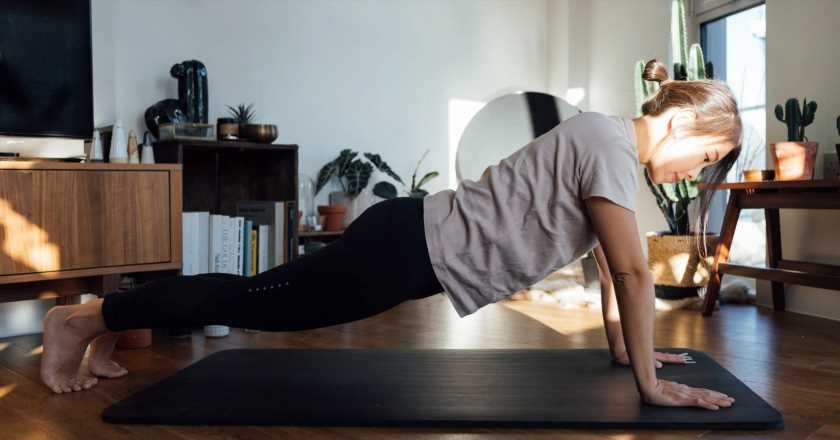Doing a full press up can feel impossible but it’s far more accessible than you might think – if you break it down.
Having a goal to see you through the winter is the best way to guarantee that you keep on moving, even when it’s miserable and cold. And that’s even better if you can achieve that goal from the comfort of your own living room or bedroom. Enter: full press ups.
The press up is one of the most effective full body exercises out there. The ultimate compound move, it targets just about every muscle in the body – demanding it move against gravity. And as such, press ups are bloody difficult.
It’s all about building the strength to push. And once you’ve got that strength to do a single full body press up, you can start to build on your endurance. Before you know it, you’ll be pressing up and down like a jack-in-a-box.
All it takes to nail them is consistency in your training to build upper body strength and stability.
We’ve roped in press-up pro and PT Alice Miller to explain how we can work towards building that full-body strength.
How to do a press-up in just four weeks
Nail a plank first
Before we can think about lowering to the floor, we need to be able to hold the starting position that will support our body through the movement.
“You need to be able to maintain a strong position throughout, so if you’re struggling with the plank then it will affect your form,” says Miller. “Practice holding a plank while keeping the shoulders back and down, away from your head.”
Aim to be able to hold a high plank for a full minute. That might mean doing a plank every day for a couple of weeks, building up from 20 seconds to 60 seconds.
Try incline press ups first
Incline press-ups sound scary, but placing your hands on a raised surface can actually help take some of the resistance away while you work on form. According to research published in the Journal of Strength and Conditioning, you move 64% of your body weight in full press-up, while using an incline involves moving 41%. That’s less weight than you’d be shifting in a knee press up.
That means if you’re a 70kg woman, you’d be moving 29kg, rather than 45kg – still tricky, but considerably easier.
Don’t be too worried about the height of your surface; just use your sofa, coffee table, desk, stairs, or any raised surface in your house.
Go slow on the descent
Negative press-ups are a great way to build more strength through the upper body before you can press yourself back up again. “This is where you move really slowly on the eccentric part of the movement, AKA when you’re lowering yourself down to the ground,” explains Miller.
Begin on your knees and lower yourself slowly to the floor, then make your way back up and start again.
“Form is key in negative moves – you’re moving so slowly that your body has the time to go through all the points of performance. Getting it right here will train your body to have perfect form as you move faster through the movement,” says Miller.
That form means shoulders down and back, as rehearsed in the plank position, with fingers spread widely and your weight spread through all of the fingers rather than simply being dumped into the wrists.
Hold at the lowest point in your press up
Isometric work is another strength building technique that you can utilise before you’re able to nail the full rep. “This is when you’re not moving but your muscles are engaged,” explains Miller.
Lower yourself down as far as you can (on your knees), and when you find the point where you can’t go any further, hold there for up to five seconds before bringing your chest to the ground and resetting at the top of the movement.
The ultimate press up workout
Have a go at this workout:
- 10 x incline press-ups until failure (as many reps as you can until you can’t do anymore without compromising on form)
- 10 x negative press-ups on the knees until failure
- 5 x isometric holds until failure
- 3 x 30 seconds plank
Repeat three times.
After the first week, you might want to up the intensity by swapping the incline press-ups for press-ups on the knees. In week three you might be able to do the negative press-ups on your toes rather than on your knees. Note how many reps you can do until you reach failure too, as this will show how much strength you’ve gained too.
On week four, try a full press-up (or two!) and see how you get on. Once you’ve nailed it, have a celebration, then repeat the same programme using full press-up variations to add on reps to your press-ups. You’ll be doing 10 in no time.
Follow @StrongWomenUK on Instagram for the latest workouts, delicious recipes and motivation from your favourite fitness experts. Check out Alice’s press-up programme on True Coach.
Images: Getty
Source: Read Full Article
